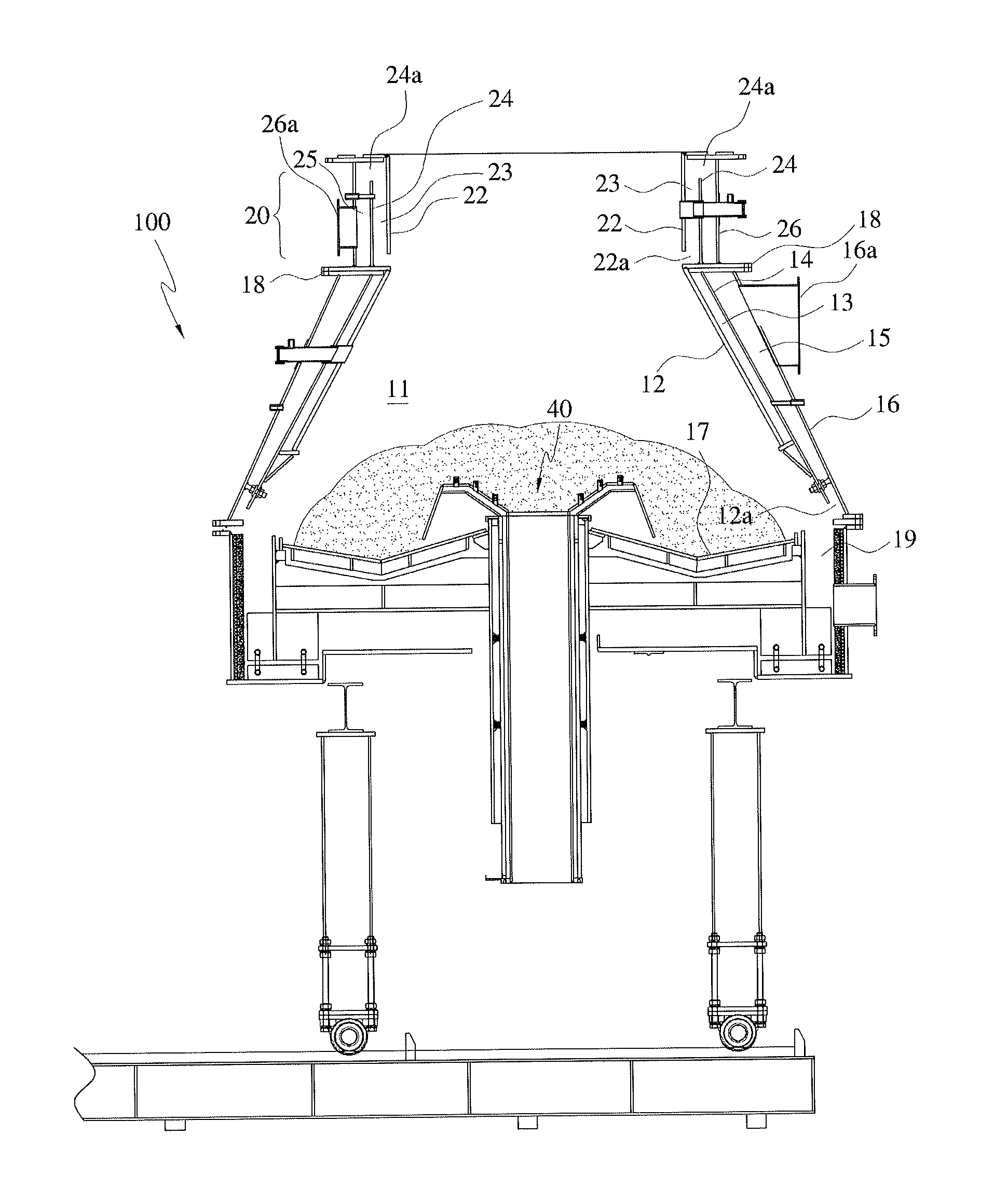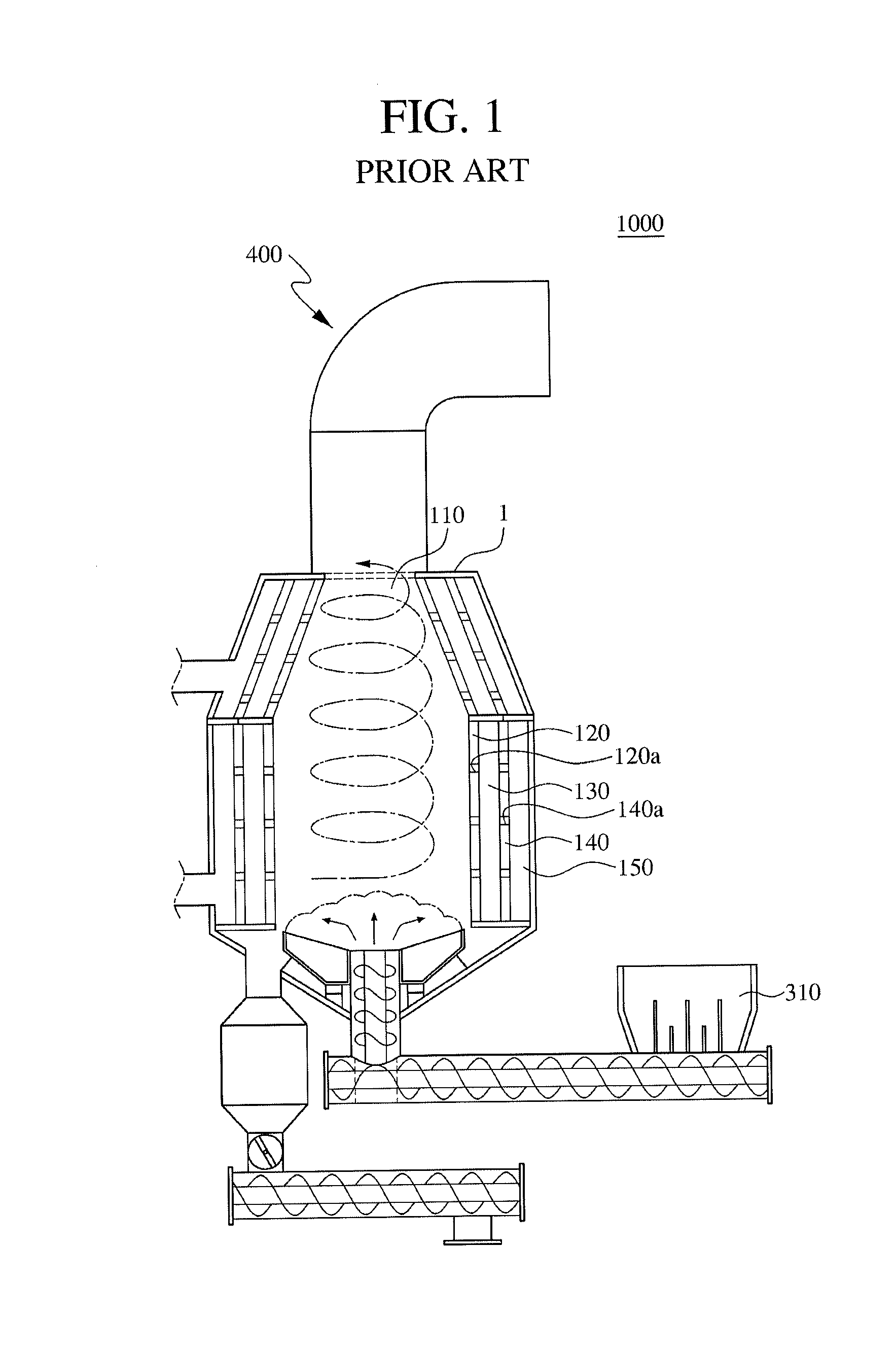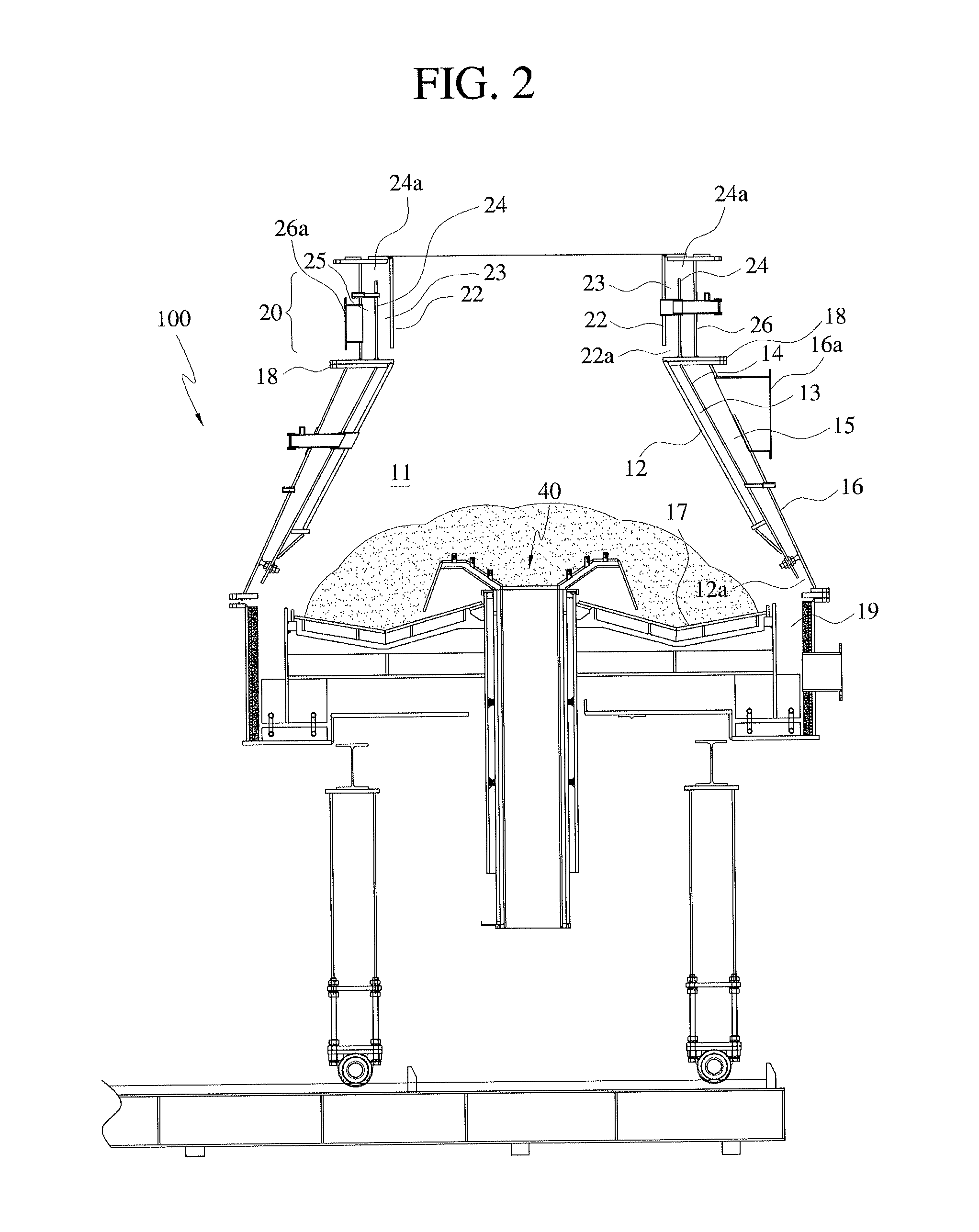Combustion apparatus with improved thermal efficiency
a combustion apparatus and thermal efficiency technology, applied in the direction of lighting and heating apparatus, solid fuel combustion, combustion types, etc., can solve the problems of easy construction automation of remaining ashes, easy to waste solid fuels, and low thermal efficiency, so as to reduce heat loss, improve thermal efficiency, and reduce temperature
- Summary
- Abstract
- Description
- Claims
- Application Information
AI Technical Summary
Benefits of technology
Problems solved by technology
Method used
Image
Examples
Embodiment Construction
)
[0030]A combustion apparatus according to a preferred embodiment of the present invention will be described with reference to the accompanying drawings, FIGS. 2 to 5.
[0031]FIG. 2 is a cross-sectional view schematically showing a combustion apparatus according to an embodiment of the present invention. FIG. 3 is a cross-sectional view showing one side of a combustion vessel of FIG. 2. FIG. 4 is a schematic diagram showing a process that discharged cooling water is introduced into a boiler. FIG. 5 is a cross-sectional view showing a fuel supply unit of FIG. 2.
[0032]A combustion apparatus according to a preferred embodiment of the present invention, includes a combustion vessel 100 that burns a fuel therein and generates combustion gases of high temperature generated by combustion, and collects heat from the high temperature combustion gases using a boiler.
[0033]First, the combustion vessel 100 is formed in a cylindrical shape, and contains and burns a solid fuel therein. The combusti...
PUM
 Login to View More
Login to View More Abstract
Description
Claims
Application Information
 Login to View More
Login to View More - R&D
- Intellectual Property
- Life Sciences
- Materials
- Tech Scout
- Unparalleled Data Quality
- Higher Quality Content
- 60% Fewer Hallucinations
Browse by: Latest US Patents, China's latest patents, Technical Efficacy Thesaurus, Application Domain, Technology Topic, Popular Technical Reports.
© 2025 PatSnap. All rights reserved.Legal|Privacy policy|Modern Slavery Act Transparency Statement|Sitemap|About US| Contact US: help@patsnap.com



